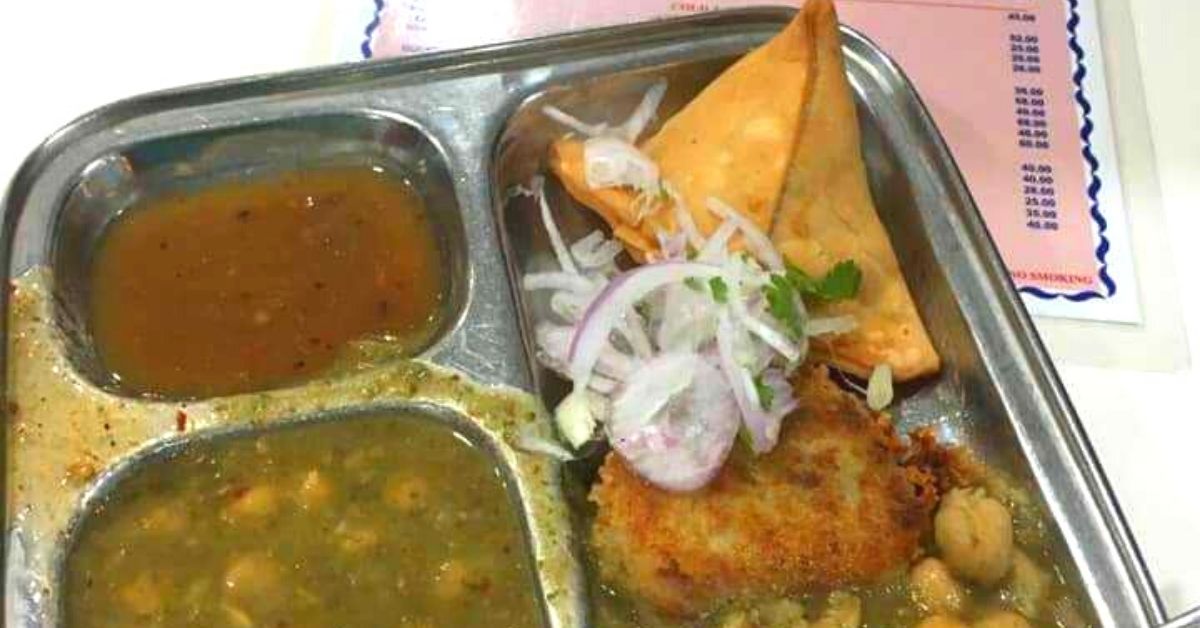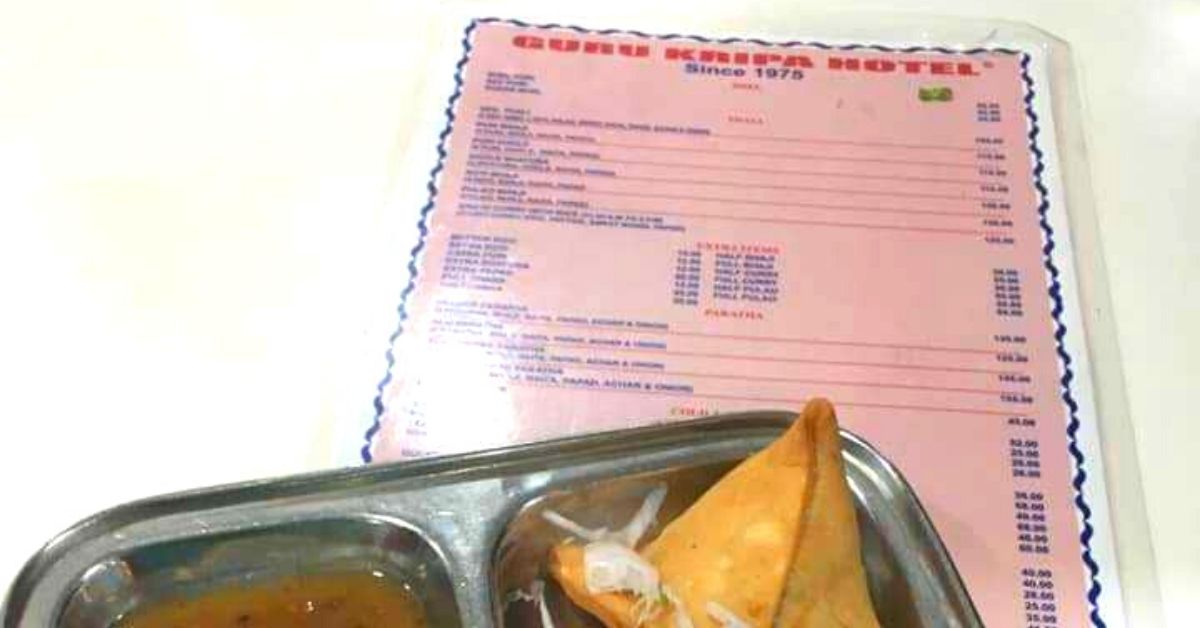I remember watching Dilwale Dulhaniya Le Jayenge (DDLJ) (1995) in the theatre for the first time in 2013, courtesy of Maratha Mandir. I had bunked my college lectures on a Thursday to catch the 11 am show. For the uninitiated, DDLJ has been running uninterruptedly at the iconic theatre for over two decades now.
![]()
With tickets priced at just Rs 20 for balcony seats, and old print and ads, and of course, the hooting on the hero’s arrival on the single screen, I relived the 90’s era. But what made the entire experience more enjoyable was beautiful, flaky, and crisp samosa that came in a white butter paper packet. This delectable snack was crafted by the iconic Guru Kripa in Sion, Mumbai. I gorged on the snack and took some home. This simple experience turned out to be one of my most special memories, with Guru Kripa’s ‘A1’ samosas enhancing the experience of watching my favourite movie multifold.
On February 5, Vishindas Wadhwa, founder of the iconic eatery, passed away due to a heart ailment. The 76-year-old’s restaurant is known city-wide for its delicious samosas. From students to working professionals and celebrities like Raj Kapoor, Dilip Kumar and Amitabh Bachchan, the restaurant has fans from every arena.

If you are a Mumbaikar, it would be safe to assume that you have eaten the delectable ‘A1’ samosas at least once, either at Guru Kripa’s outlet in the Chunabhatti area, or in a theatre. The company was a major supplier of samosas to several single-screen theatres in the city. The family gradually took them to multiplexes like PVR, Cinemax and Fame.
Isn’t it amazing how one person’s idea, skills and hardship can create joyous moments and enrich experiences in so many people’s lives?
Little did Wadhwa know he would be that person for many, when he came to India during the partition. “His family came empty-handed as refugees after partition, leaving behind their ancestral home in Karachi. He set up Guru Kripa in 1975 as a small stall, which then grew in stature and fame after his recipes became so popular,” Wadhwa’s grandson told Times of India.
Banking on his culinary skills, Wadhwa built his stall bit by bit, and focussed on raising the quality with time. He also introduced other items like chats, idlis and chhole. He never let the old-school bambaiya (slang for Mumbai) charm fade, as the star savoury snack, samosa, remains in the spotlight. The ubiquitous snack continues to capture the essence of Mumbai – welcoming, adaptable, inventive and heterogeneous. Their chana dal samosa is another popular dish.

With this enviable reputation, Wadhwa went on to expand the business by taking it to various outlets and theatres. This way, even a person living far off from Sion could relish the hot and fresh samosas. According to the Economic Times, the eatery supplied an average of 15,000-20,000 samosas daily before the lockdown declined their business by 60 per cent.
There was a time theatre owners measured the success of films by the number of the samosas sold. It is popularly believed that samosa suppliers often thanked filmmakers for giving them high-profit margins every Friday. Needless to say, Wadhwa’s Guru Kripa has always been a frontrunner.
Featured image sources: Godhbandhar Sidhi Association/Facebook and The Crazy Indian Foodie/Facebook
Edited by Divya Sethu
No comments:
Post a Comment